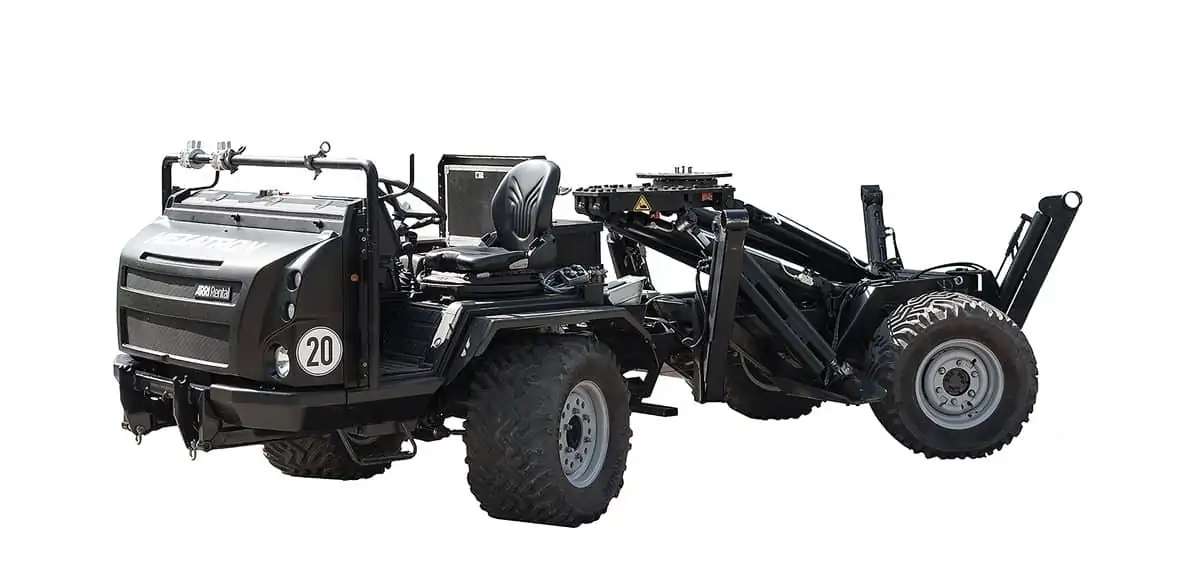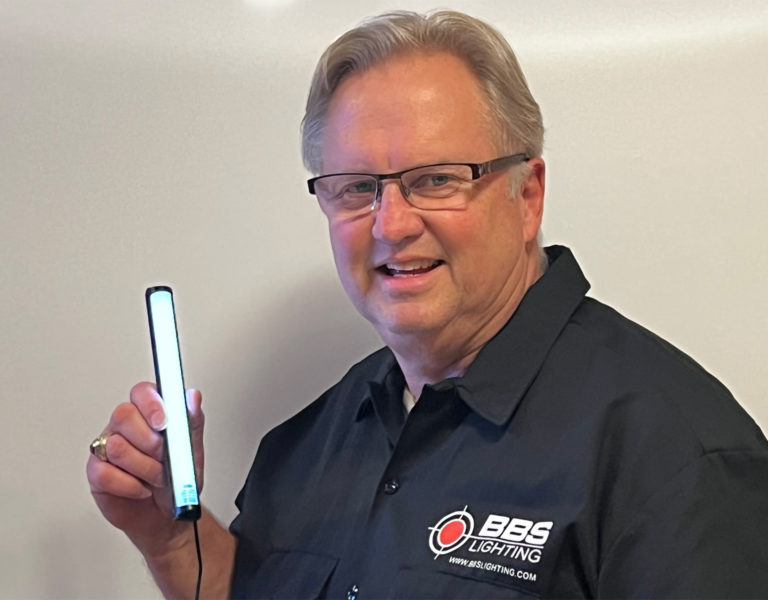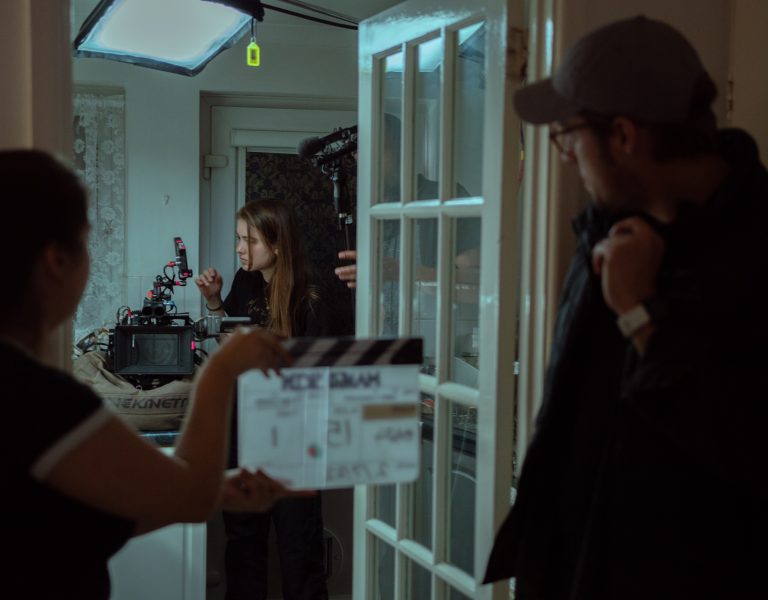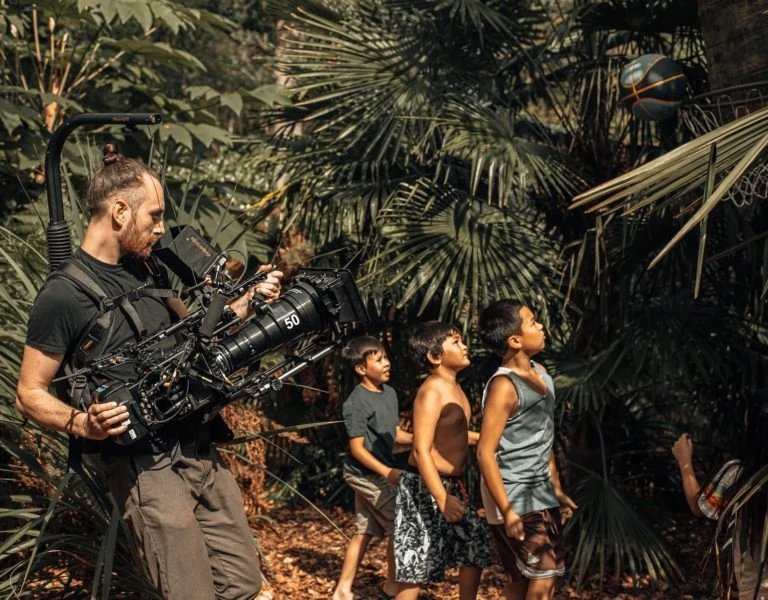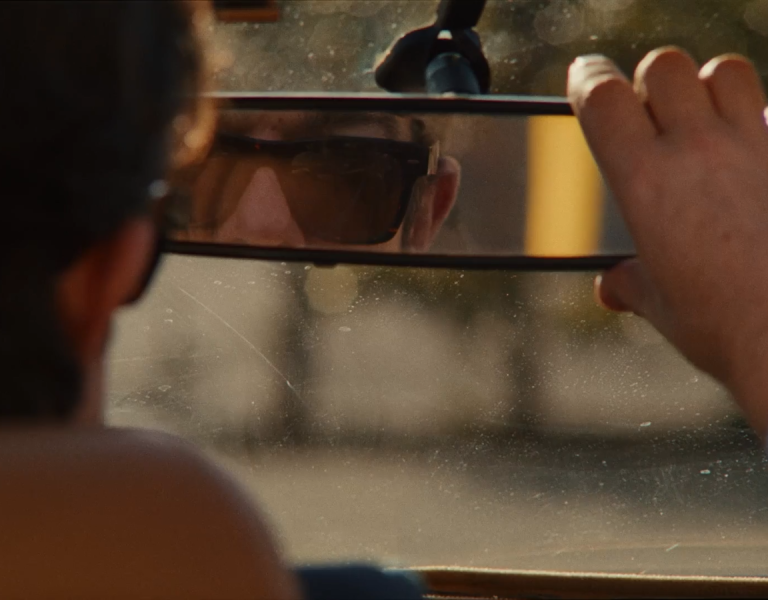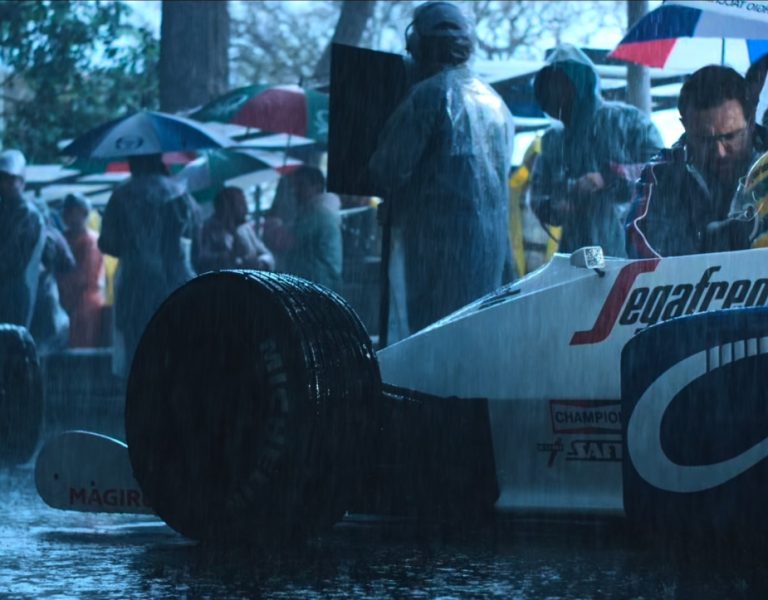REACHING NEW HEIGHTS
From a Korean beach to a Miami swimming pool, an English theatre to an American concert hall, cranes offer DPs a cinematic way to explore space and character.
Florian Hoffmeister BSC tackled tides and translators to accomplish a beautiful crane shot in the opening episode of Pachinko, an epic Apple TV+ series. “Formal film language is at the centre of his heart,” says the DP of director Kogonada and the classical camera style the pair established.
Panchinko’s central character, Sunja, grows up in a Korean fishing town in the 1920s, later emigrating to Japan. “The first episode was about establishing a sense of space so that the audience could relate to the place that Sunja left behind,” says Hoffmeister, who aimed to create a “visceral memory” with the girl’s childhood. “Those elements were really in our heads when we reccied the coastline for the sequence when little Sunja goes into the water to mourn her father’s death.”

The cove chosen for this sequence presented many challenges including strong tides, loose stones, and difficult access. “Because of the nature of the move and the proximity we wanted to have to her, it was clear that we wouldn’t be able to fly a drone,” says Hoffmeister. A crane was the only way to achieve the “controlled move” that he and Kogonada wanted, following Sunja (played as a child by Yuna) as she walks down the steps and into the sea. Getting a 50ft Technocrane down those narrow steps, however, was out of the question.
Instead, the production hired a ship fitted with a large construction crane from the nearby port of Busan. “That ship was so big, and the crane was so big, it made the 50ft Techno look like a toy,” Hoffmeister remembers. The vessel’s arrival was timed for the optimal tide, when it lifted the Technocrane onto a platform which grip Namkwon Lee had built on the stony shore in a position carefully chosen by the DP. “That actually involved – because of the nature of our language barriers – just a humungous amount of communication.”
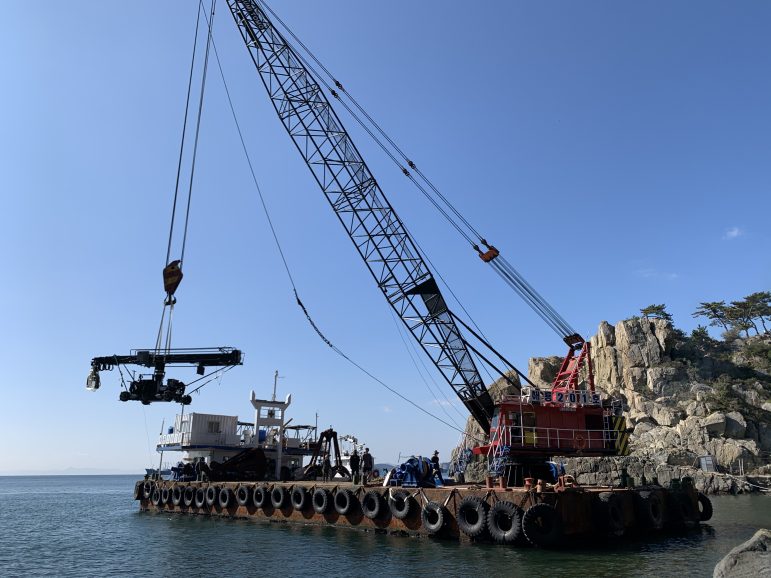
EXPLOSIVE ACTION
Across the globe in Tenerife, Simon Rowling and his key grip Pepe Hernandez used a Panther Foxy crane as part of a single-take scene in Duchess, an action-thriller set in the world of diamond smuggling. “There was always the sense of trying to keep the story flowing and a certain pace to the film,” says Rowling, “so ‘keep the camera moving’ was always our ethos.” In the oner, “our heroes are escaping a warehouse and shooting their way out as they make their way to a truck and then drive away, shooting suppressing fire as they leave.”
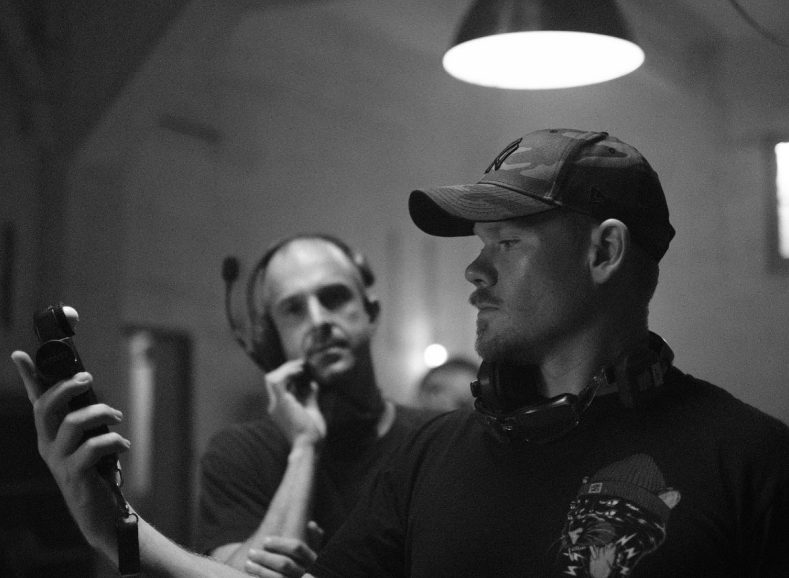
An Alexa Mini with a Hawk V-Lite anamorphic lens was mounted on a Ronin 2 controlled by DJI Master Wheels. Initially the Ronin was underslung from the crane, framing a high wide angle of the warehouse exterior. On action an explosion blasted out of the doors, and the crane swooped down over a jeep as actor Philip Winchester emerged from the smoke. “Our grip team unlocked the gimbal from the crane and then track with the actor as he runs to the back of his truck and jumps in,” Rowling continues. The team then locked the gimbal onto a Black Arm on a tracking vehicle, “and then we tracked with the heroes as they drive off and shoot back at the enemy.”
Naturally the scene required careful planning. “We did multiple rehearsals with and without stunts and pyro, so everyone knew the timings, and for our grip team to get the unclipping of the gimbal and fixing onto the tracking vehicle right.” The effort paid off when only two takes were needed to get the oner in the can.
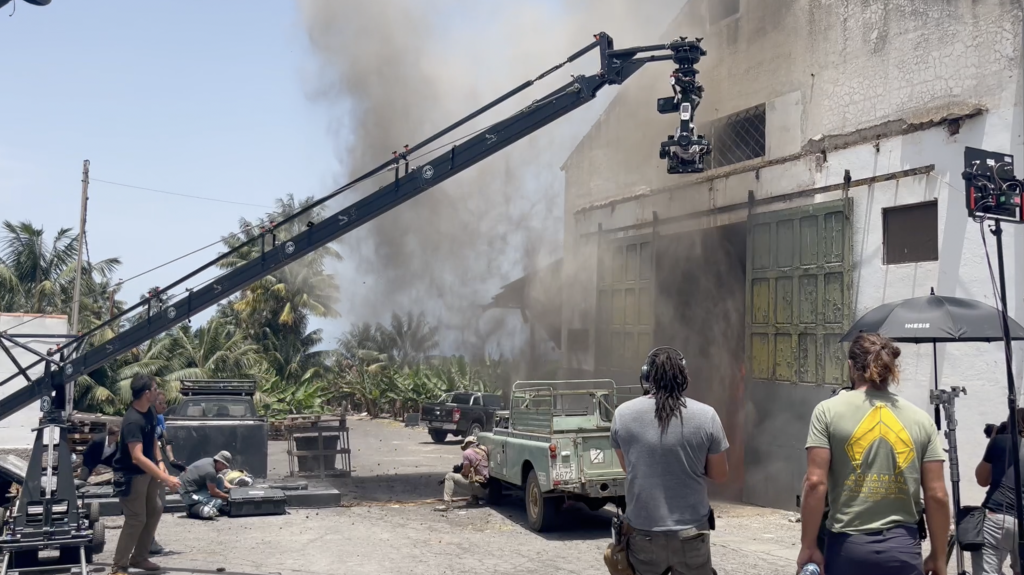
FILMING THEATRICS
I shot a oner for a very different type of scene in Sean Mathias’s upcoming adaptation of Hamlet. Mathias had written a 24-page treatment which included one specific shot for a pivotal moment in the Danish prince’s story: when he decides to stage a play mirroring his uncle’s crimes “to catch the conscience of the king”.
The three-minute monologue starts on a close-up of Hamlet (Sir Ian McKellen) and slowly pulls back to reveal the whole circle of the Theatre Royal Windsor’s auditorium. Then, when Hamlet’s idea strikes, he rises from his seat in the back row. “He will come closer to the camera,” Mathias’ treatment stated, “and through his ‘active’ energy the camera will draw closer to him.”
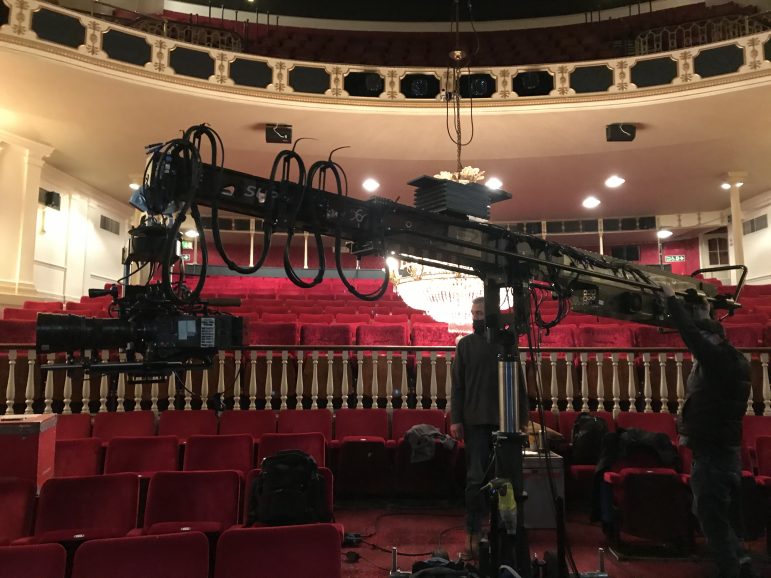
To pull off the shot, we had several seats removed from the stalls to make room for a SuperTechno 22. Our Alexa XT was fitted with a 25-250mm Cooke Cinetal and mounted on an Aurora LT head. During the first half of the shot, we zoomed out and pulled back as far as the lens and space permitted, before tightening back in to end on a low-angle mid-shot of McKellen at the front of the circle.
The shot was a carefully rehearsed collaboration between myself on the wheels, Aristide Russo pulling focus, Ashton Born controlling the zoom, and Mark Morley, Sid Jones and Adam Slater operating the crane.
TEAM EFFORT
Collaboration is also key to M. David Mullen ASC’s work on Amazon’s The Marvelous Mrs. Maisel. “The camerawork tends to be very flowing and dance-like,” he says. “It rarely goes in a straight lines.” So once directors Amy Sherman-Palladino or Daniel Palladino have described what they want, Mullen confers with A-camera operator Jim McConkey, MōVI operator Larry McConkey, and key grip Charlie Sherron to figure out the execution. “We use the MōVI a lot on Technocranes too. When we have to deal with winds we’ll go to a Libra head, but when we can we’ll use the MōVI.”
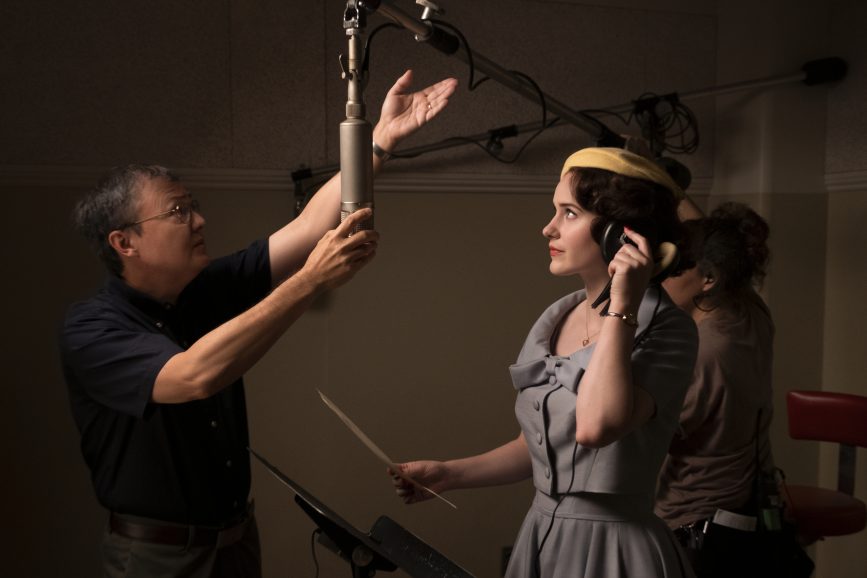
Maisel, the story of a Jewish housewife turned stand-up comic in 1950s New York, has featured several stand-out camera moves to date. For example, the burlesque show which required a Steadicam operator to walk up a ramp to a stage, move through the set, get lifted up to the set’s second floor and back down again by a crane, then re-emerge from the set to look back on it. Or season three’s introduction to the Fontainebleau Hotel, which started with a Technocrane move over a fountain, then detached as Larry McConkey took the MōVI into the building and linked it to a second Technocrane which swept around the lobby, followed by a second detachment to track the eponymous Miriam Maisel (Rachel Brosnahan) to the check-in desk. “Also important to all of this is Anthony Cappello, our 1st AC, because he’s got to work out all the camera connections and the focus pulling,” Mullen notes.
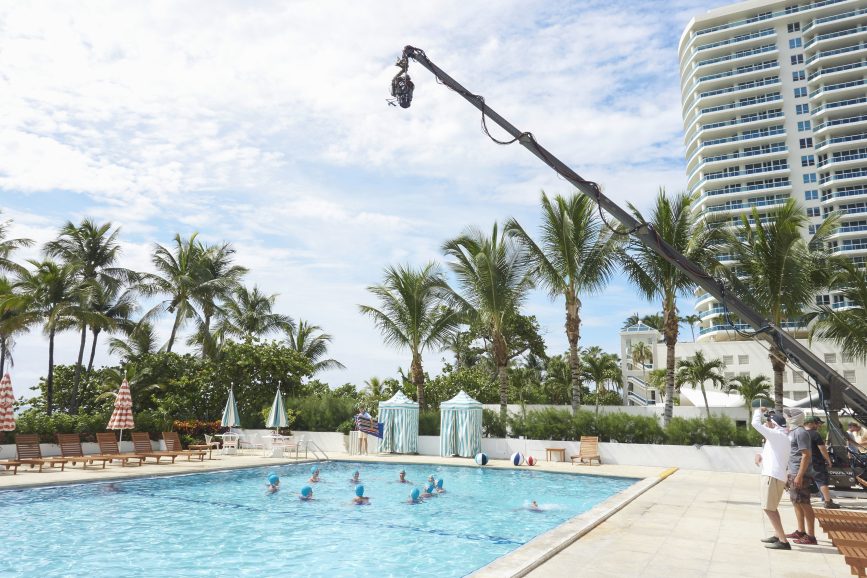
Another impressive crane shot in season three features synchronised swimmers, plunging underwater with them before rising up to 50ft for a top-down view of their formation, sinking back down to find Brosnahan at the poolside, tracking her partway around the pool then rising up again. “You have to deal with the fact that a heavy camera is suddenly buoyant when it’s underwater,” says Mullen. “We had to put a cross-pipe at the front end of the crane so that when the camera plunged underwater two grips grabbed the pipe and held the camera underwater and then let go again when it was time to rise up.”
Mullen adds, “When we do these big crane moves outside, I have to get the AD to understand that there’s only certain times of day when I can shoot where I’m not going to have a crane shadow over the actors.” A VFX fix was necessary on the pool shot when filming was delayed by two hours due to a vehicle breakdown, meaning that the midday sun cast a shadow from the crane into the corner of the frame.
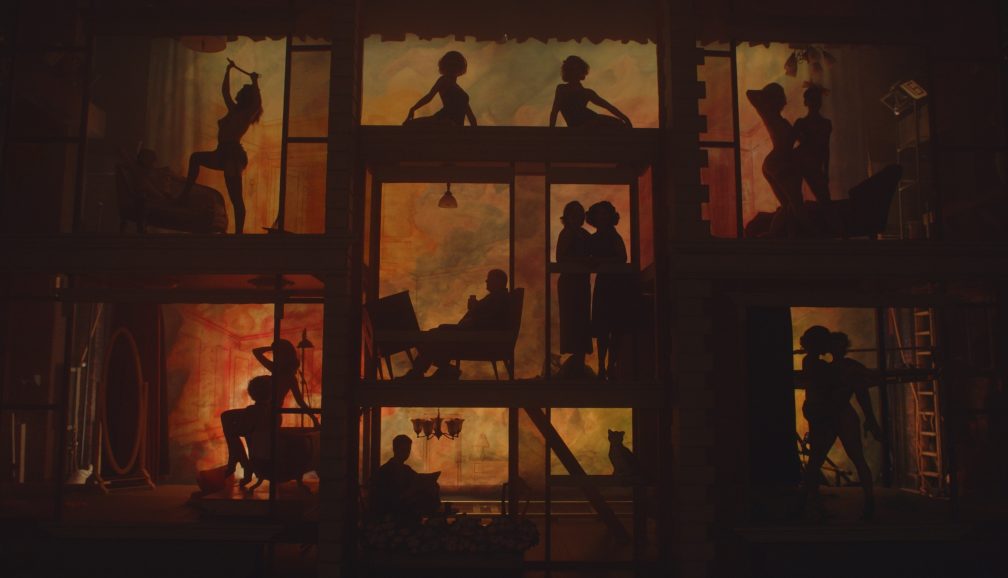
AHEAD OF HIS TIME
Oliver Stapleton BSC offers his own story of crane woes: “I went to St. Louis to shoot Hail! Hail! Rock ’n’ Roll for Taylor Hackford on the occasion of Chuck Berry’s 60th birthday [in 1986]. We had nine Panavision 35mm cameras sent in at short notice to film the concert plus one Louma crane which was very new to the USA at that time.” After a mix-up with the crane being sent not just to the wrong location but the wrong state, “I then discovered none of the professional operators we had hired had ever used a remote head, so I ended up having to operate the remote.
“All was going well with Chuck, Keith Richards and a posse of famous musicians giving their all on the stage. I was yelling instructions to the grips down the intercom and flying the crane all over the place whilst spinning the wheels. All of a sudden, the crane stopped in a static position and nothing I could say would make it move. I took my eyes away from the monitor to see that the grip at the bucket end was sitting on a box eating a sandwich!” The grip insisted that it was dinner time, holding up the entire concert for 15 minutes. “Although it stunned me at the time, I came to rather admire him later as an early example of a film worker who was not going to have production abuse him!”
